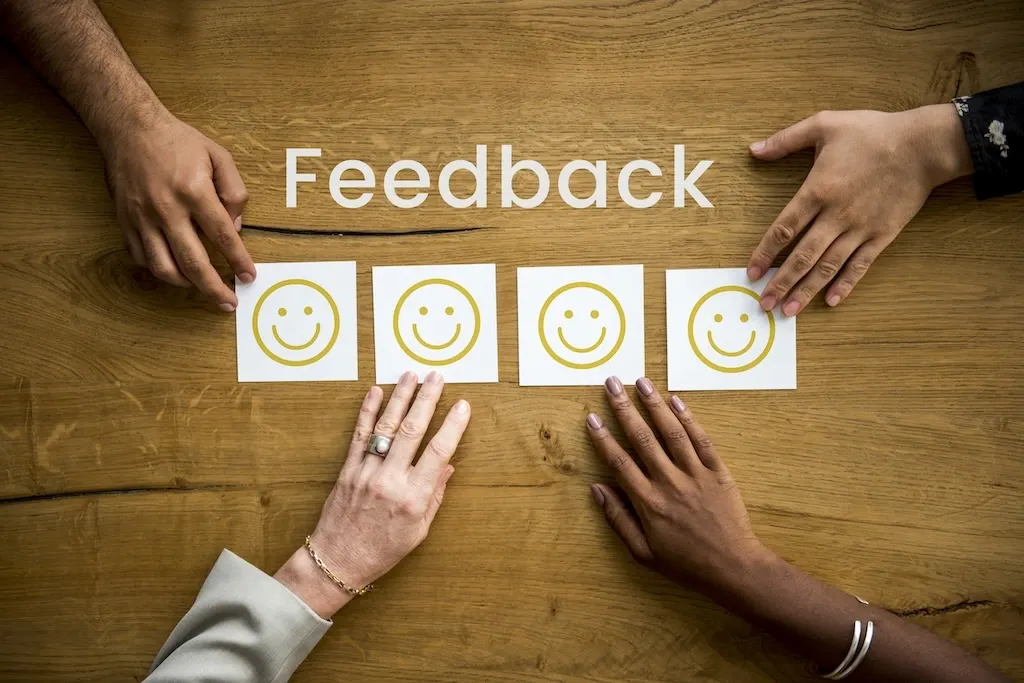7 Performance Rating Scale Examples in 2025
Measuring employee performance has always been a cornerstone of effective people management; however, in 2025, the expectations around fairness, transparency, and adaptability are higher than ever. Organisations are moving beyond generic annual reviews, experimenting with both traditional rating scales and modern frameworks, such as behaviour-based assessments and continuous feedback systems.
Choosing the correct performance rating scale is more than assigning a number; it’s about creating a system that motivates employees, reduces bias, and aligns individual contributions with business goals.
In this article, we explore a range of performance rating scale examples, comparing their advantages, limitations, and best use cases to help HR leaders and managers select the right approach for today’s workplace.

Why performance rating scales matter in 2025
In 2025, organisations are under more pressure than ever to evaluate performance fairly, consistently, and with future growth in mind. Hybrid work models, AI-driven analytics, and the increasing demand for transparency have transformed how companies design and utilise performance rating systems.
Performance rating scales remain a central tool for tracking employee contributions, aligning teams with business objectives, and making informed decisions regarding promotions, compensation, and development opportunities. The challenge is not whether to use rating scales, but how to select and adapt the right model for your organisation’s culture and needs.
What is a performance rating scale?
A performance rating scale is a structured framework used by organisations to measure employee performance against predefined standards. It provides managers and HR teams with a systematic way to assess contributions, compare performance across individuals or teams, and clearly communicate results.
From a human resources perspective, rating scales help organisations reduce subjectivity, track trends over time, and ensure fairness in performance-related decisions such as compensation, promotions, and career development.

Traditional scale examples
While newer approaches are emerging, traditional numerical rating systems remain prevalent due to their simplicity and ease of implementation.
3-point scale – Usually consists of Below expectations, Meets expectations, Exceeds expectations. It is simple and fast but lacks nuance.
4-point scale – Eliminates the neutral middle option, forcing managers to choose between stronger or weaker performance. Encourages clearer differentiation but may feel overly rigid.
5-point scale – A balanced option widely used in HR. Ranges from Unsatisfactory to Outstanding, offering more nuance without overwhelming raters.
7-point scale – Expands the range further, allowing for more granular feedback. While this provides detail, it risks overcomplicating the process and may lead to inconsistent interpretations.
Modern scale examples (2025)
While traditional scales remain widely used, many organisations in 2025 are adopting more sophisticated models that emphasise behaviours, competencies, and ongoing feedback to create a fuller picture of performance.
Behaviorally Anchored Rating Scale (BARS)
BARS links each rating to specific, observable behaviours rather than abstract labels. For example, instead of rating “communication skills” on a scale of 1–5, it describes what effective and ineffective communication looks like at each level. This reduces ambiguity and helps employees understand what improvement requires.
"The behaviorally anchored rating scale (BARS) can help provide a clearer, more objective framework for measuring employee performance." —People Managing People
Competency-based rating scales
These scales measure performance against defined competencies such as teamwork, leadership, innovation, or adaptability. In 2025, many organisations align these competencies with company values, ensuring that evaluations support long-term culture and strategy.
Continuous feedback frameworks
Instead of one-off ratings during annual reviews, continuous frameworks track progress throughout the year. Scores may still exist, but they are complemented with real-time feedback, check-ins, and development notes. This approach reflects the growing trend towards agile performance management.

Comparison table: Traditional vs modern scales
Type | Example | Number of points | Descriptors | Best use case |
| 3-point | Below / meets / exceeds expectations | 3 | Simple, broad | Small teams, fast reviews |
| 4-point | Needs improvement → excellent | 4 | Clear, slightly nuanced | Avoids neutral ratings; small to mid-sized teams |
| 5-point | Unsatisfactory → outstanding | 5 | Balanced, nuanced | Standard corporate reviews |
| 7-point | Strongly disagree → Strongly agree | 7 | Detailed, granular | Large organisations with diverse roles |
| BARS | Behaviourally defined levels | Varies | Observable behaviours | Reducing subjectivity, skill-specific roles |
| Competency-based | Leadership, teamwork, and adaptability | Varies | Aligned with values | Culture-driven orgs, talent development |
| Continuous frameworks | Real-time ratings + feedback | Flexible | Ongoing progress | Hybrid/remote teams, agile companies |
Advantages & disadvantages
Every performance rating scale comes with trade-offs. The right system can bring clarity, consistency, and motivation, while the wrong fit may introduce bias, confusion, or disengagement. Understanding the advantages and disadvantages is essential for selecting a model that balances simplicity, fairness, and organisational needs.
Simplicity vs nuance
Traditional scales are easy to use and understand, but may oversimplify performance. Modern scales provide richer insights but can feel burdensome for managers. Striking the right balance ensures evaluations are both actionable and manageable. Overly complex systems can overwhelm managers, while overly simple scales may fail to capture critical performance differences.
Bias risk
No system is immune to bias. Even behaviour-based scales may suffer if raters are not trained properly or if organisational culture favours certain traits. Awareness and mitigation strategies, such as structured scoring and cross-rater reviews, are essential. Reducing bias enhances credibility and ensures that ratings accurately reflect actual performance.
Flexibility across industries
Some industries, such as healthcare or education, require detailed competency-based models, while tech startups often prefer continuous feedback for agility. Flexibility is key. Organisations should customise their approach to suit role requirements and strategic priorities without compromising consistency. A flexible system allows meaningful comparisons while respecting unique operational contexts.
Employee perception and trust
Scales that feel overly rigid can damage trust. Transparent systems that explain how ratings are used build stronger employee buy-in. Including employees in the process, such as through self-assessments or feedback discussions, further reinforces confidence. When employees trust the system, they are more likely to engage with development plans and act on feedback.
Impact on engagement & retention
When linked with development opportunities, rating scales can boost motivation. If seen as punitive, they risk disengagement. Clear connections between performance evaluations and career progression create a sense of purpose. Effective systems reward achievements, encourage improvement, and foster long-term employee commitment.

Best practices for using rating scales in 2025
Choosing the right performance rating scale is only half the challenge; how it is applied makes the real difference. In 2025, best practices focus on consistency, fairness, and technology-driven support to ensure rating systems are not just numbers, but tools for growth and alignment.
Calibration
Hold calibration meetings across departments to ensure consistency in how managers apply scales. This process prevents rating inflation or overly harsh scoring within specific teams. It also encourages managers to share examples, align expectations, and build a common understanding of what each performance level means across the organisation.
Fairness
Employees must feel evaluations are objective. Using clear descriptors and aligning with competencies can help achieve this. Fairness also requires transparency in how ratings influence decisions on pay and promotion, ensuring employees believe the process is merit-based rather than subjective.
Bias control
Training managers to recognise unconscious bias is essential to maintain reliable scores. Bias can creep in through halo effects, personal preferences, or cultural assumptions. Proactive training, combined with structured evaluation criteria, reduces these risks and ensures ratings accurately reflect actual performance rather than perception.
AI assistance
AI productivity tools can flag inconsistencies, detect rating inflation, and provide analytics for HR leaders, making scales more data-driven and informed. Additionally, AI can uncover patterns across teams or demographics, enabling HR to identify systemic issues early. When paired with human judgment, these insights make the evaluation process both smarter and more equitable.
Linking to career development
Ratings should directly inform development plans, enabling employees to see a clear pathway for growth rather than a static score. Linking scores to skill-building opportunities, mentorship programmes, or internal mobility creates a sense of progress. This approach transforms the performance review from a backwards-looking exercise into a forward-looking career conversation.
Transparency in communication
Explaining how ratings are calculated and used reduces suspicion and builds confidence in the system. Open communication also makes employees more receptive to constructive feedback. By removing ambiguity, organisations strengthen trust and demonstrate that the process is designed to support, not punish, the workforce.
Integration with OKRs or KPIs
Linking rating scales to measurable objectives ensures alignment between individual contributions and business goals. This creates a clear line of sight from daily tasks to company strategy. When done effectively, it also helps managers evaluate performance based on outcomes rather than subjective impressions.
Industry examples
Technology: Tech companies often prefer continuous feedback frameworks to support fast-moving projects and remote teams.
Healthcare: BARS or competency-based scales are common, as they reflect specific behaviours and standards required for patient safety and care.
Education: A mix of traditional scales and competencies is used to measure teaching effectiveness, learning outcomes, and administrative roles.
Common pitfalls & fixes
Even the best-designed performance rating scales can fail if they are misapplied or misunderstood. Identifying common pitfalls and knowing how to address them is crucial for maintaining accuracy, fairness, and employee trust in the evaluation process.
Rating inflation
Managers sometimes give higher ratings to avoid conflict. Fix: Use calibration sessions and AI monitoring. Overly generous ratings make it difficult to distinguish high performers from average employees. Addressing inflation ensures that recognition and rewards are meaningful and aligned with actual performance.
Bias
Cultural, gender, or personal biases can skew ratings. Fix: mandatory training and behaviour-based descriptors. Bias can undermine trust in the performance management process and negatively impact employee retention. Reducing bias helps create a fairer, more inclusive workplace where employees feel evaluated on merit.
Over-reliance
Overemphasising scores can reduce meaningful feedback. Fix: pair ratings with narrative comments. Scores alone may miss critical context, such as teamwork, initiative, or problem-solving skills. Combining numbers with qualitative insights encourages a more balanced and actionable review.
Lack of rater training
Without proper training, even the most advanced systems can fail. Fix: invest in workshops and HR-led guidance. Managers may interpret scales inconsistently or apply personal standards, undermining fairness. Regular training ensures everyone understands the criteria and applies them reliably.
One-size-fits-all approach
Using the same scale for every department ignores context. Fix: adapt scales to roles while keeping consistency in principles. Different roles may require distinct competencies or performance measures. Customising scales ensures relevance while maintaining comparability across the organisation.
Neglecting qualitative feedback
Numbers alone cannot capture performance. Fix: require written examples alongside ratings. Qualitative feedback provides clarity on both strengths and areas for development. It also supports career conversations and helps employees understand how to improve beyond the numeric score.

Conclusion
Performance rating scales remain powerful tools for assessing employees in 2025, but they should not be the sole element of performance management. The most effective organisations combine structured scales with continuous feedback, clear communication, and development-focused follow-ups. Ultimately, scales are not just about scoring; they are about guiding growth and aligning people with organisational goals.
FAQs
What is the best rating scale?
There is no universal “best” scale. The right choice depends on your organisation’s size, industry, and culture. Many companies combine traditional ratings with modern continuous feedback.
Are rating scales outdated?
Not at all. While the format is evolving, rating scales remain essential in performance management, especially when integrated with real-time feedback and career development planning.
How do I choose the right one?
Start with your business goals. If you need speed and simplicity, use a 5-point scale. If you require detail and objectivity, try BARS. For agility, consider continuous feedback systems.
